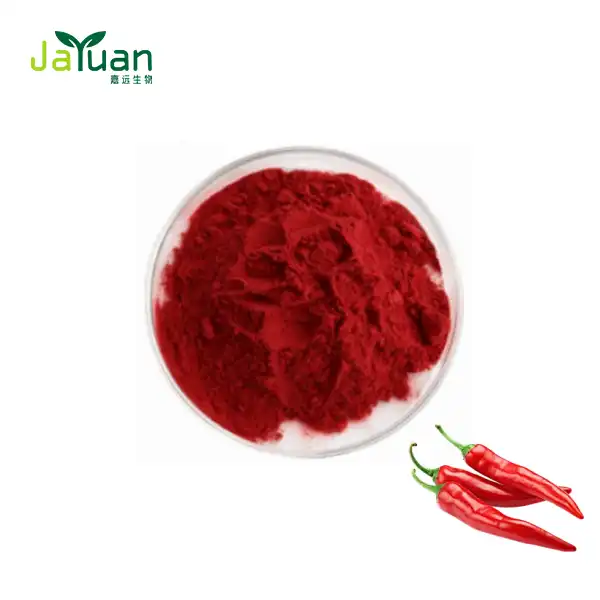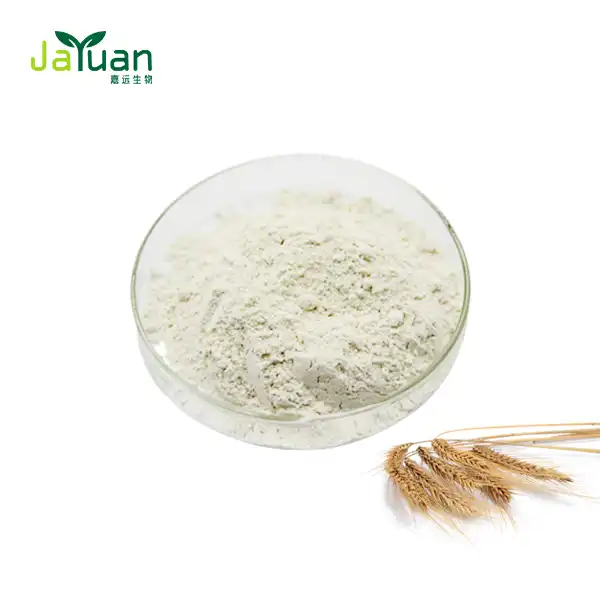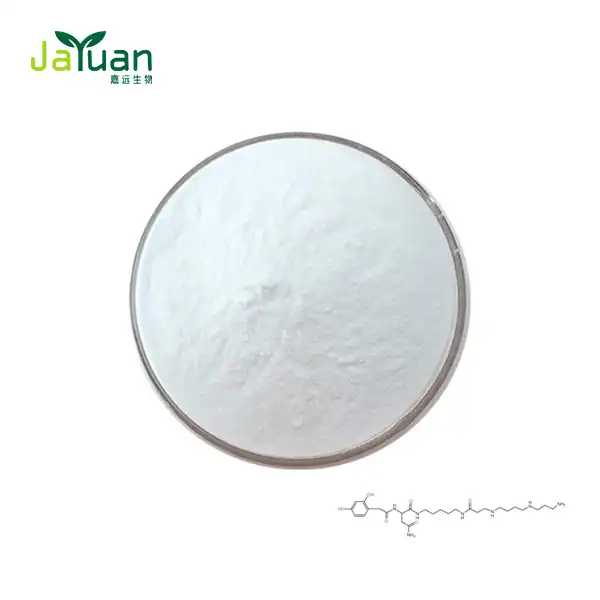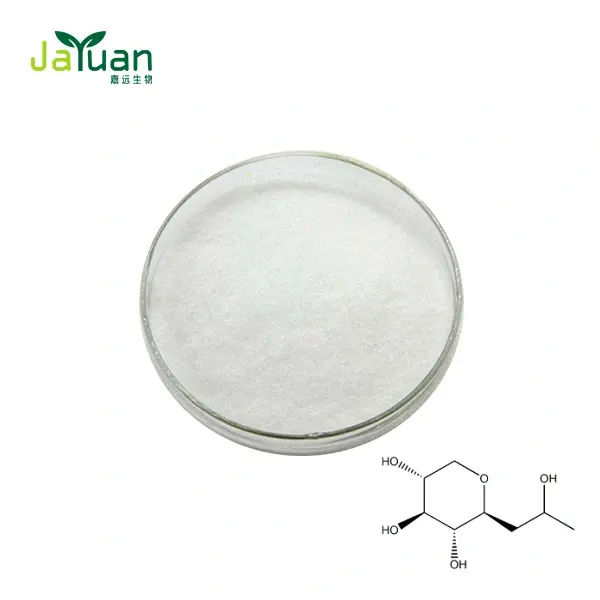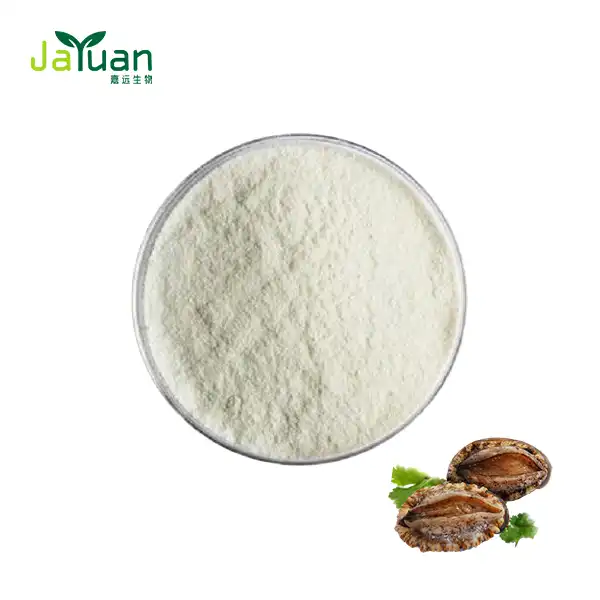What is the classification of Palmatine?
Palmatine is a captivating compound that has caught the consideration of specialists and wellbeing devotees the same. As we dig into the universe of normal mixtures, understanding the characterization and expected advantages of Palmatine Extract is fundamental. In this complete aide, we'll investigate the different parts of Palmatine, its order, and why it's turning out to be progressively famous in the wellbeing and health industry.
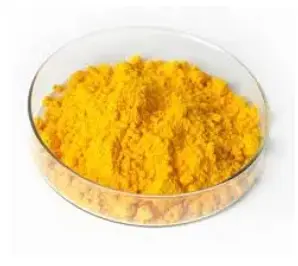
Understanding Palmatine: An Overview
Palmatine is a quaternary protoberberine alkaloid that has a place with the isoquinoline alkaloid family. It's tracked down normally in a few plants, including types of Berberis, Coptis, and Corydalis. Palmatine shares a chemical structure with berberine, another well-known alkaloid with numerous health benefits.
Palmatine Concentrate is gotten from these plants and has been utilized in customary medication rehearses for quite a long time, especially in Asian nations. Its developing fame in the Western world is because of arising research featuring its potential medical advantages and helpful applications.
There are a number of reasons why the classification of palmatine is important:
- It aids in the comprehension of its chemical properties and potential interactions with other substances by researchers.
- Compounds with similar properties can be found through classification.
- It provides a framework for investigating the compound's biological activities and potential applications in medicine.
Chemical Classification and Properties of Palmatine
To completely see the value in the order of Palmatine Extract Powder, understanding its substance design and properties is urgent:
Structure of a chemical: Palmatine has a molecular weight of 352.41 g/mol and the chemical formula C21H22NO4+. Its construction comprises of four combined rings, normal of isoquinoline alkaloids.
Actual Properties: Palmatine is a yellow glasslike compound that is dissolvable in water and different natural solvents. In biological systems, its absorption and distribution depend on this solubility profile.
Classification of Alkaloid: As referenced before, Palmatine is delegated a quaternary protoberberine alkaloid. This classification is based on its biosynthetic origin and chemical structure.
Palmatine's biological activities are aided by its unique chemical properties. Researchers studying Palmatine Extract frequently focus on these chemical properties in order to comprehend how it interacts with biological systems and exerts its effects. For instance, its ability to interact with various cellular targets is partly due to its quaternary ammonium structure, which gives it a positive charge at physiological pH. This information is urgent for creating likely remedial applications and seeing any conceivable incidental effects or collaborations with different mixtures.
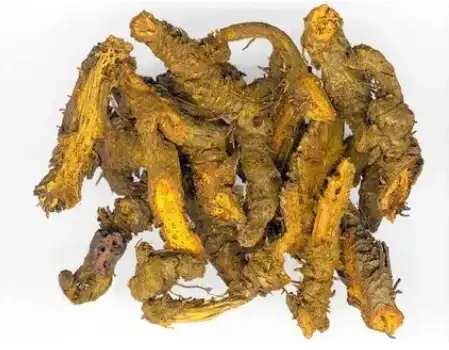
Biological Activities and Potential Health Benefits
The characterization of Palmatine as an isoquinoline alkaloid isn't simply of scholastic interest; it has true ramifications for its potential medical advantages. The discovery of a variety of biological activities in Palmatine Extract Powder makes it an intriguing compound for future research:
Calming Properties: Palmatine has been shown in studies to reduce inflammation in a variety of tissues. This calming activity could be valuable for conditions described by ongoing aggravation.
Activity Against Microbes: Palmatine has shown antibacterial and antifungal properties in research center examinations. Because of this, it could be used to make new antimicrobial agents.
Cardiovascular Wellbeing: Some exploration recommends that Palmatine might decidedly affect heart wellbeing, including expected benefits for circulatory strain guideline and cholesterol the board.
Neuroprotective Impacts: Fundamental examinations show that Palmatine could have neuroprotective properties, possibly valuable for mental wellbeing and neurological issues.
Regulating the metabolism: There is growing evidence that palmatine may regulate metabolism, which could be beneficial for people with diabetes and obesity.
It's essential to take note of that while these potential advantages are promising, a significant part of the examination is still in beginning phases. More clinical examinations are expected to completely figure out the impacts of Palmatine Concentrate in people and to decide protected and powerful doses.
Insights into Palmatine's potential mechanisms of action are also provided by its classification as an alkaloid. Palmatine Extract Powder bulk, like other alkaloids, has the ability to interact with a variety of cellular targets, including ion channels, enzymes, and receptors. Its wide range of potential health effects can be attributed to its adaptability in biological interactions.
As exploration proceeds, we might find significantly more applications for Palmatine Concentrate. Its grouping as an isoquinoline alkaloid places it in a group of mixtures known for their different organic exercises, proposing that there might be something else to reveal about this captivating particle.
Conclusion
Understanding Palmatine's chemical properties, biological activities, and potential health benefits can be based on its classification as a quaternary protoberberine alkaloid in the isoquinoline alkaloid family. Palmatine, which is an extract made from a variety of plants, gives a fascinating look at the world of natural compounds and how they could be used in health and medicine.
Although research on Palmatine Extract is still ongoing, its classification has already assisted in directing studies into its cardiovascular, neuroprotective, metabolic, anti-inflammatory, and antimicrobial effects. It is evident that this compound's unique chemical structure and properties play a crucial role in its biological activities as we continue to investigate its potential.
It is essential to remain informed about the most recent research and developments in this field for those who are interested in learning more about Palmatine Extract and other compounds derived from plants. On the off chance that you're interested about integrating Palmatine or other plant removes into your wellbeing routine, it's in every case best to talk with a medical care proficient who can give customized counsel in view of your singular necessities and wellbeing status.
We at Xi'an Jiayuan Bio-Tech are dedicated to providing plant extracts of the highest quality and remaining at the forefront of this exciting field of research. In the event that you have any inquiries concerning Palmatine Concentrate or our different items, kindly make sure to out to us at sales@jayuanbio.com. Our team of experts is always ready to help you and give you the information you need to make decisions about your health and wellness journey that are right for you.
References
- Pottabathini, R., Kumar, A., Chopra, K., Mukherjee, M., and Dhull, D. K. Current information and pharmacological profile of berberine: An update. 761: 288–297, European Journal of Pharmacology.
- Gulfraz, M., Mehmood, S., Ahmad, A., Fatima, N., Praveen, Z., and Williamson, E. M. (2008). Examination of the antidiabetic exercises of Berberis lycium root separate and berberine in alloxan-prompted diabetic rodents. Phytotherapy Exploration, 22(9), 1208-1212.
- Imanshahidi, M., and Hosseinzadeh, H. (2008). Pharmacological and remedial impacts of Berberis vulgaris and its dynamic constituent, berberine. Phytotherapy Exploration, 22(8), 999-1012.
- I. Kosalec, B. Gregurek, D. Kremer, M. Zovko, K. Sankovi, and K. Karlovi all contributed to this work. Croatian barberry (Berberis croatica Horvat): an investigation of its antimicrobial activity and a brand-new source of berberine. World Diary of Microbial science and Biotechnology, 25(1), 145-150.
- Vuddanda, P. R., Chakraborty, S., and Singh, S. (2010). Berberine: a potential phytochemical with therapeutic properties across multiple spectrums. Well-qualified Assessment on Investigational Medications, 19(10), 1297-1307.

